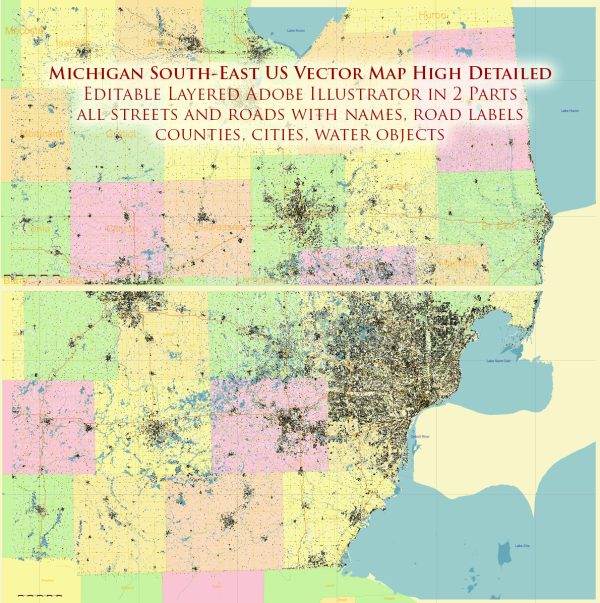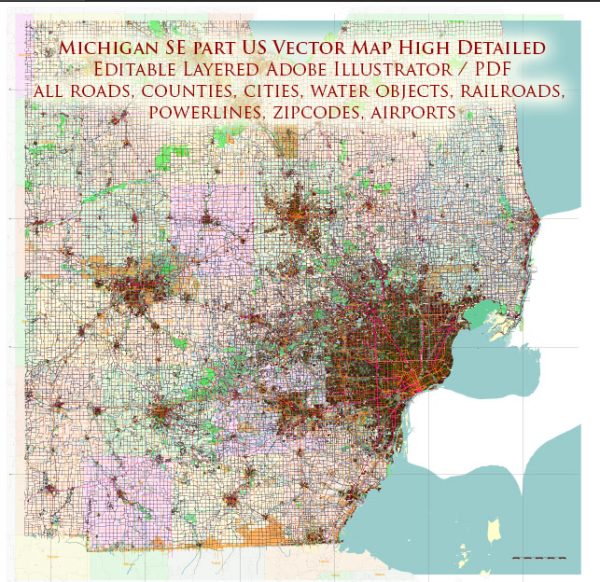The southeast part of Michigan, particularly the Detroit metropolitan area, has a rich history of urban development that reflects the broader trends and challenges faced by many industrial cities in the United States. Here is an overview of key historical aspects:
- Early Settlement and Industrialization:
- The area was initially settled in the late 18th century, and Detroit, founded in 1701 by Antoine de la Mothe Cadillac, became a key trading post and military outpost.
- The late 19th century saw rapid industrialization, with the rise of the automotive industry. Henry Ford’s introduction of the assembly line in the early 20th century further accelerated growth.
- Great Migration and Demographic Changes:
- The early to mid-20th century witnessed a significant demographic shift due to the Great Migration, as African Americans moved from the Southern United States to northern industrial cities seeking better economic opportunities.
- This influx of people contributed to the city’s cultural diversity but also presented social and economic challenges.
- Urban Expansion and Suburbanization:
- After World War II, there was a massive influx of people into the city and its surrounding areas, driven by economic opportunities in the booming auto industry.
- Suburbanization became a major trend in the mid-20th century, as middle-class families moved to the suburbs, facilitated by the construction of highways and the availability of affordable housing.
- Deindustrialization and Economic Decline:
- The late 20th century brought challenges as the automotive industry faced global competition. Deindustrialization led to significant job losses, contributing to economic decline and population loss in Detroit.
- The 1967 Detroit Riot was a pivotal moment, exacerbating racial tensions and accelerating white flight to the suburbs.
- Urban Renewal and Revitalization Efforts:
- In the late 20th and early 21st centuries, there were various attempts to revitalize Detroit and other urban areas in southeast Michigan.
- Efforts included urban renewal projects, the construction of new sports stadiums, and initiatives to attract businesses back to the city.
- Post-2008 Financial Crisis and Resurgence:
- The 2008 financial crisis hit Detroit hard, leading to the city’s declaration of bankruptcy in 2013—the largest municipal bankruptcy in U.S. history at that time.
- Post-bankruptcy, there has been a renewed focus on revitalization, with investments in infrastructure, public services, and efforts to attract new businesses.
- Cultural and Technological Developments:
- Detroit’s rich cultural history, including its contributions to music (Motown) and art, has played a role in shaping the city’s identity.
- The region has also embraced technological developments, with a growing emphasis on innovation and entrepreneurship.
Overall, the southeast part of Michigan, particularly Detroit, has experienced a complex history marked by industrial prosperity, racial tensions, economic challenges, and ongoing efforts at revitalization and renewal. The story of this region reflects broader trends in urban development in the United States.



 Author: Kirill Shrayber, Ph.D.
Author: Kirill Shrayber, Ph.D.